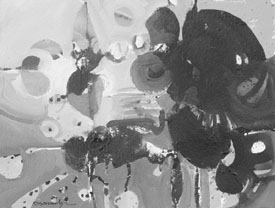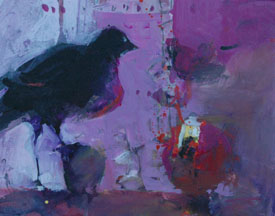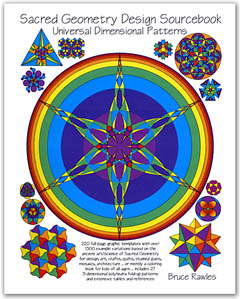 close window    Golden Section Composition
|
 Golden Section Have you ever noticed how artists and architects throw around the phrase, "The Golden Section?" or "The Golden Proportion?" And, heck it even played an important part in the book "The DaVinci Code." In that book it was explained flawlessly. In fact, every year your Artist-type monthly magazine will feature and explain to us creative-types the Golden Section and how to use it. I can guarantee you that every year, you also tell yourself that you will understand, figure it out and be able to explain it to anyone who is willing to listen. But, while reading the explanation something happens to you within minutes. You quit reading! Why? Because the author is taking about math - and math is a major mystery to us creative-types. They talk about fractions, ratios, geometry, mechanical drawing stuff like... the length of the whole line divided by the length of the larger part must be in the same ratio as the length of the larger part relative to the smaller part. And I have not even talked about 0.617 and 0.383 ratio!
 Golden Section Black & White Painting Yikes! So why do we need to know this? From the earliest of intelligent history and the study of science, designers have thought that if you placed objects on the picture plain in very specific places, the look would be most pleasing and esthetic. (Stay with me on this, it does get better.) I was as bored as you are about all this so I decided to jump in and spend an entire month painting and using the Golden Section theory. I love it and have figured out how to utilize this composition in designing the grid in my paintings. No calculators. No math. I use a shortcut instead. Some art teachers also call this composition the "One Third, One Third, One Third" principle. I call it the "Tic Tac Toe" principle.  Golden Section Grid Do this: Divide your paper or canvas into thirds, vertically and then divide same paper or canvas into thirds, horizontally. You've drawn a Tic Tac Toe grid. Where the lines cross over each other, that will essentially mark the four spots for you to "place" four objects. So as not to appear as a measured, static grid, make one of the four spots more dramatic than the other three remaining object locations.  Golden Section Painting Admittedly, this is an oversimplification of a beautiful, scientific, geometric plan. I've made the system quick for me and basically have taken the low road to simplifying the rules of science. A word of caution... this Golden Section design is only used by me as a starting point. I move things around loosely, keeping the objects close to their measured location. My goal is to not have the painting appear static so I might camouflage those points a bit and not make the grid design look so obvious. So there you have it -- The scientists' version of protractors, fractions, geometry and proportional esthetics, or the simple "I don't have that much time left" Bob Burridge system of tick tac toe! Here's a fun book on the subject:  Sacred Geometry Design Sourcebook Sacred Geometry Design Sourcebook: Universal Dimensional Patterns by Bruce Rawles and Nancy Bolton-Rawles Spiral-bound: 256 pages Publisher: Elysian Publishing, January 1, 1997 ISBN-10: 0965640582 ISBN-13: 978-0965640589 Buy at Amazon |

Copyright ©2008 Robert Burridge. All rights reserved.
If you wish to copy this material to other publications
or mail lists, please ask for permission by contacting:

Robert Burridge Studio
Arroyo Grande, California
805-459-1503
rburridge@robertburridge.com
www.robertburridge.com

close window